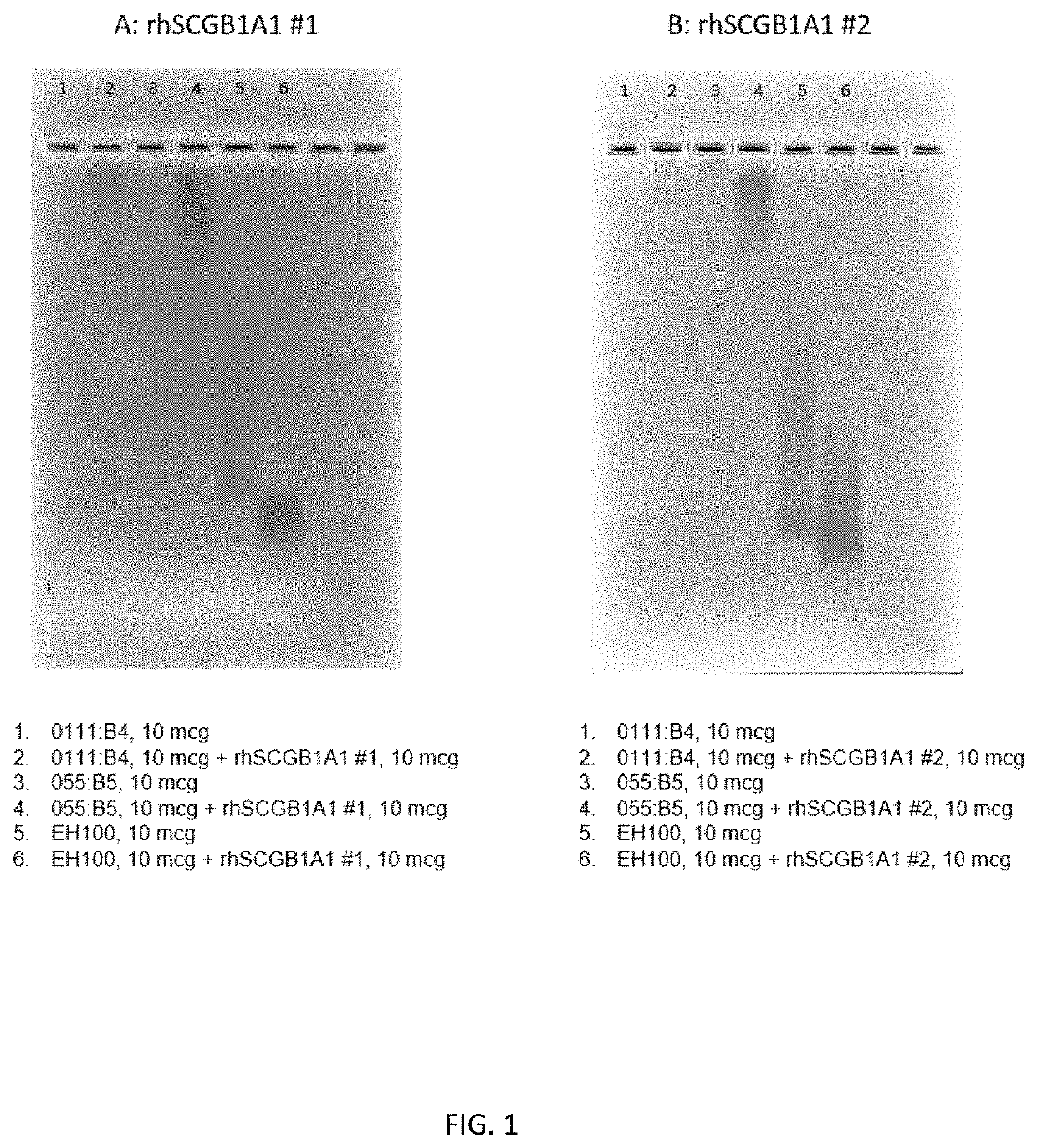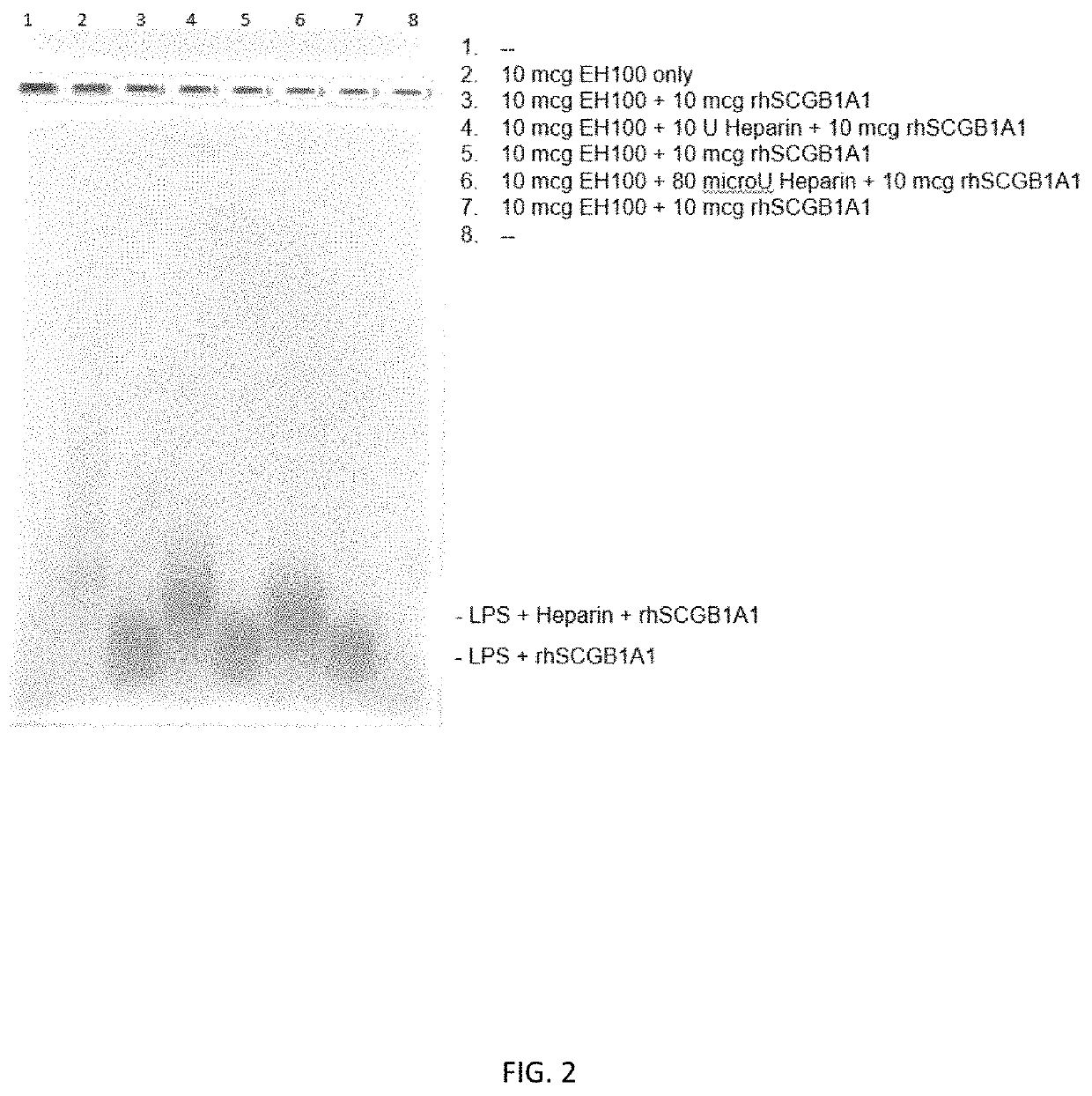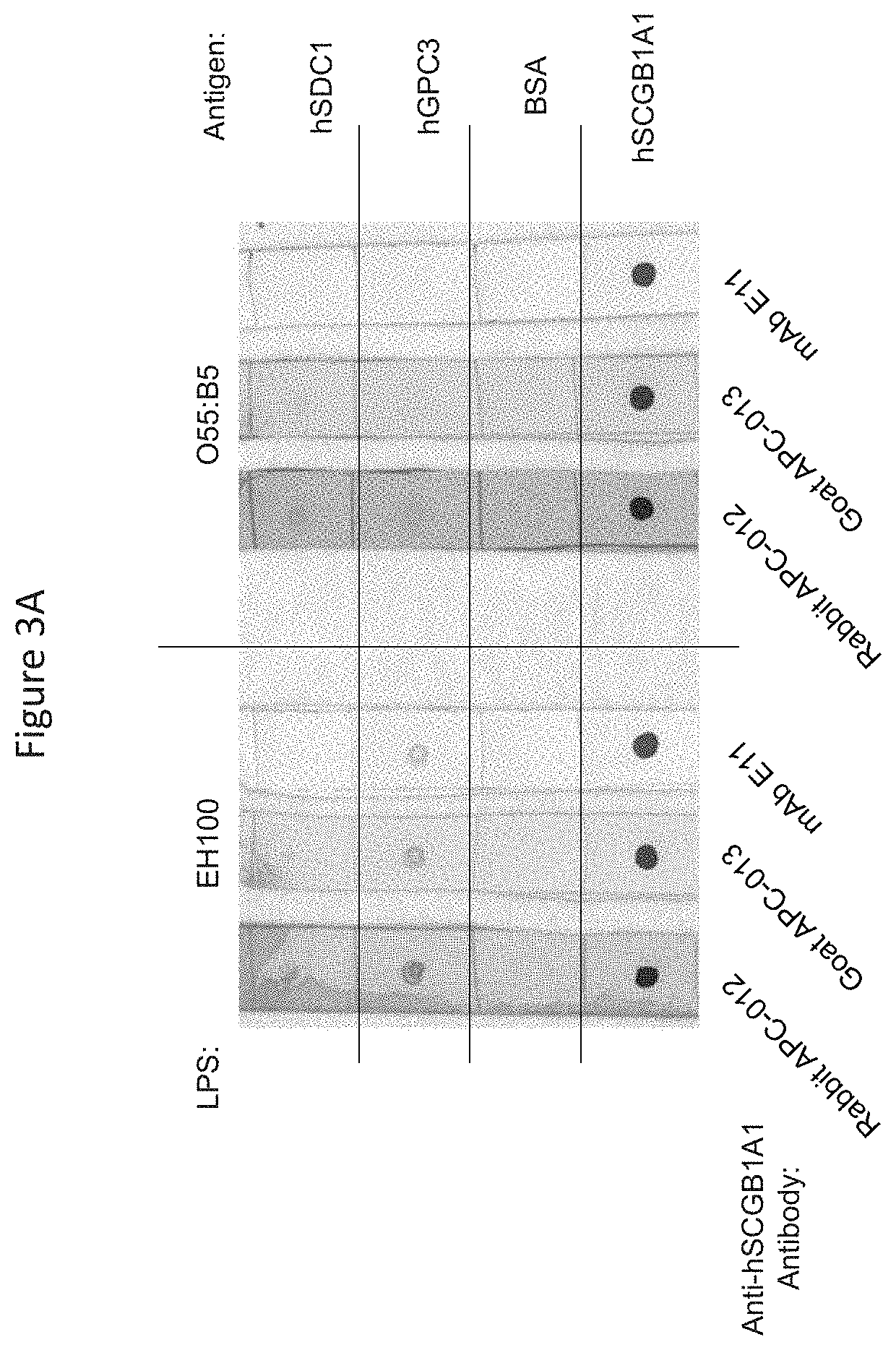Compositions and methods of use for secretoglobins to protect the glycocalyx via interactions with heparan sulfate proteoglycan proteins
a technology of proteoglycan and secretoglobin, which is applied in the field of secretoglobins, can solve the problems of edema that can be life-threatening in the lungs, heart, and other organs, and increase the risk of hemorrhage, so as to prevent endothelial shedding, prevent endothelial shedding, and prevent endothelial shedding
- Summary
- Abstract
- Description
- Claims
- Application Information
AI Technical Summary
Benefits of technology
Problems solved by technology
Method used
Image
Examples
example 1
[0067] Binding of human SCGB1A1 to bacterial lipopolysaccharide (LPS), also known as endotoxin. LPS is made up of lipid, carbohydrate chains (polysaccharide), and a small amount of protein derived from bacterial cell membranes. LPS is an extremely potent inflammatory mediator and must be specifically reduced to a very low or undetectable level in medicinal preparations in order to minimize toxicity. We observed that synthetic human SCGB1A1 (rhSCGB1A1) binds to LPS using an electrophoretic mobility shift assay (EMSA) in which the migration of LPS through an agarose gel was accelerated in the presence of SCGB1A1 as shown in FIG. 1. The agarose gel EMSA of FIG. 1 demonstrates the formation of non-covalently linked complexes between recombinant human SCGB1A1 and LPS. Panels A and B show complexes between two different batches of rhSCGB1A1 and 3 types of LPS, including 0111:B4, O55:B5, and EH100. Briefly, the EMSA method used 10 micrograms (mcg) of three different preparations of LPS dis...
example 3
[0069] Binding of SCGB1A1-LPS complexes to HSPGs in vitro, binding of multiple SCGBs binding to multiple HSPGs in the presence and absence of LPS, and binding of chemically modified rhSCGB1A1 to HSPGs. Recombinant human syndecan-1 (hSDC1), syndecan-4 (hSDC4), and glypican-3 (hGPC3, all expressed in cultured human cells (HEK293) in order to best approximate human HSPG protein side chains in humans in vivo, were purchased from a commercial vendor. The binding of the rhSCGB1A1-LPS complexes to these two HSPG proteins was investigated using a “Far Western” dot blot method. Briefly, 200 ng each of SDC1, SDC4, GPC3, rhSCGB1A1 (positive control), and bovine serum albumin (BSA; a negative control), all in phosphate buffered saline (PBS) pH 7.4, were spotted onto nitrocellulose membranes and allowed to dry. The membranes were blocked in 5% non-fat dry milk in PBS pH 7.4 for 1 hour at room temperature. The rhSCGB1A1-LPS complexes were prepared as in Example 1 (1:1 weight ratio) during the blo...
PUM
 Login to View More
Login to View More Abstract
Description
Claims
Application Information
 Login to View More
Login to View More - R&D
- Intellectual Property
- Life Sciences
- Materials
- Tech Scout
- Unparalleled Data Quality
- Higher Quality Content
- 60% Fewer Hallucinations
Browse by: Latest US Patents, China's latest patents, Technical Efficacy Thesaurus, Application Domain, Technology Topic, Popular Technical Reports.
© 2025 PatSnap. All rights reserved.Legal|Privacy policy|Modern Slavery Act Transparency Statement|Sitemap|About US| Contact US: help@patsnap.com



